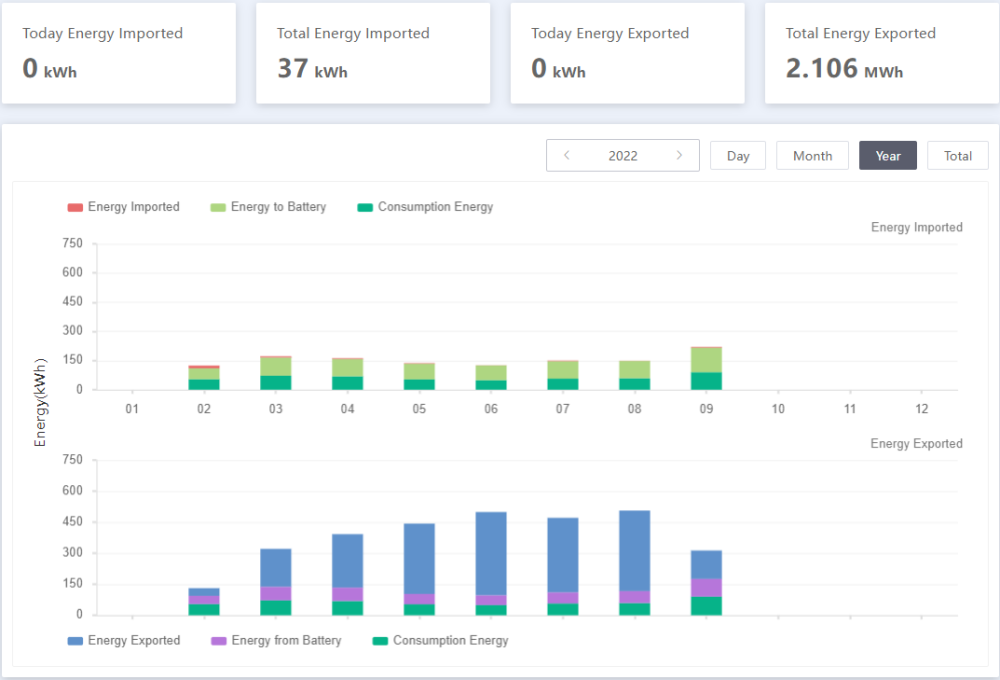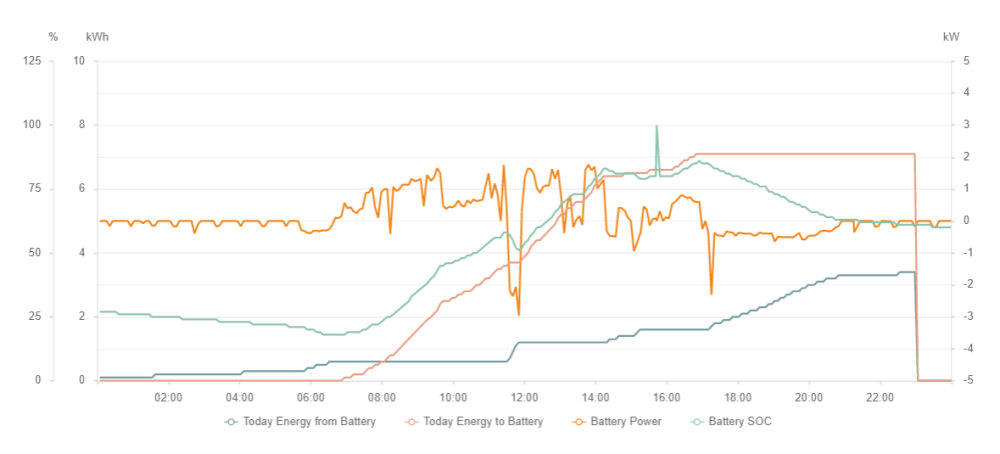Battery Storage - 7 month update
As promised another update, following many tweaks and a firmware upgrade from Solis.
So the existing problems were:
- Whenever the battery isn't at 100% SOC, it pulls an amount of power from the grid, somewhere between 60W and 100W
- Even when the battery is actively charging, it still pulls the same 60-100W from the grid, regardless if there is enough PV power to charge the battery and cover loads at the same time. Once the battery is 100% SOC and im generating PV more than my load, I import 0W.
- Pulsating loads (such as induction hob) the unit can find hard to track, due to their pulsing nature, and the delay in reading the CT clamp and acting upon it.
The firmware upgrade was to fix the pulsating load issue, it doesn't completely resolve it, however it is much better tracked now. Solis reduced the polling time for the CT, so it is polled more often than before. The problems with the excess import of between 60-100W remained, however Solis put some variables in the new firmware which allowed them to place an offset, we tried many different values and eventually stopped at a 65W offset, now the grid connection fluctuates between +40W and -50W which overall has fixed the issue as good as can be without draining too much of the battery power.
Oddly since adding the second US3000C module, my overnight usage (no PV input) has dropped from around 0.35kWh to 0.2kWh, why i'm not sure but no complaints from me there!!
Now have 6.6kWh of usable capacity, to note the original US3000C module had just dropped to 99% SOH, manual states to use the newer module as the master, which I did, so its now once again showing 100% SOH, and the 1% drop of the older module is handled internally. Upon connecting the new battery, the old battery appeared to receive a firmware upgrade, as it restarted a few times before staying on.
Current yearly graph is looking good, still exporting a lot of power, but at least I'm using what i can now:
Shown above is a daily example of the battery charging and discharging. This was after a particularly cloudy day which only just saw me reach 100% SOC for a mere moment. The negative battery power denotes power draining from the unit, with positive being a charge.
This is the corresponding grid data for the same day.
Previously (March 2022) I reported total import of 48.3kWh. Clearly its impossible to compare with another month, and we will have to wait til March has been and gone once again, however here is the monthly data from April onwards:
- April - 41.2kWh
- May - 18.4kWh
- June - 17.1kWh
- July - 18.9kWh
- August - 18.1kWh
- September (So far) - 18.0kWh
The tweaks to the system were finalised on May 5th, just checked my emails from Solis and that was the last contact, so April shows another month before the changes. Full credit to Paul Carpenter, the European Engineering Manager as Solis for sticking with me on all these changes til we found the sweet spot!
Hope this provides some good info for someone out there thinking of installing battery tech.
I'll post another update at the 1year point, though probably 1year from the tweaks, so May next year, and then I'll also be able to comment on my AQ for the import.
-
 5
5



7 Comments
Recommended Comments
Create an account or sign in to comment
You need to be a member in order to leave a comment
Create an account
Sign up for a new account in our community. It's easy!
Register a new accountSign in
Already have an account? Sign in here.
Sign In Now